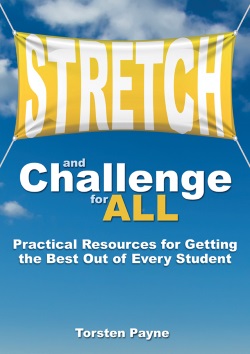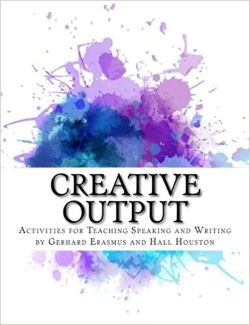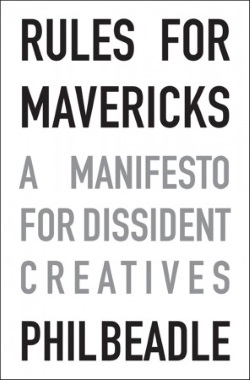Short Book Reviews
Hania Kryszewska, Poland
Hanna Kryszewska is a teacher, teacher trainer, trainer of trainers. She is a senior lecturer at the University of Gdańsk, Poland. She is co-author of resource books: Learner Based Teaching, OUP, Towards Teaching, Heinemann, The Standby Book, CUP, Language Activities for Teenagers, CUP, The Company Words Keep, DELTA Publishing, and a course book series for secondary schools: ForMat, Macmillan. She is also co-author of a video based teacher training course: Observing English Lessons. Hania is a Pilgrims trainer and editor of HLT Magazine. E-mail: hania.kryszewska@pilgrims.co.uk

Hopscotch. Pupil’s Book 3. J. Heath. National Geographic Learning. (2015). ISBN: 978-1-4080-9713-7 pp 126. This course book is part of a six-level course for primary language students who are learning English as a foreign language. The course teaches language skills in integrated skills framework, with grammar and lexis taught and practised to develop or perfect the four skills: reading, listening, speaking and writing. Each unit introduces a strong cognitive element of learning about various cultures and the surrounding world. The young learners also practice language in class project work and by engaging in art and crafts activities. Like other courses published by National Geographic Learning the course uses National Geographic photography combined with other visual materials – photographs, drawings and DVD’s. The book is accompanied by ample on-line material including support for teaching pupils with special educational needs and difficulties. For more go to:
http://ngl.cengage.com/search/productOverview

Stretch and Challenge for All. Practical Resources for Getting the Best Out of Every Student. T. Payne. Crown House Publishing Limited (2017.) ISBN 978-178583159-1, pp.172. This resource book is aimed at busy teachers who need activities which require little planning or preparation, and at the same time challenge the learners and develop their independence, creativity and metacognitive skills. There around one hundred activities divided into seven chapters: interactive activities, stimulating starters, challenges, stretching writing activities, showing progress, revision and plenaries, and mastering metacognition. Some of the activities are well known classics, some test and tried activities which have been tweaked, and some brand new. The presentation is clear and straightforward although sometimes it is not clear how long the activity will take or which level/s it would best work with. Where necessary there is accompanying photocopiable material. It is a great dip in book to supplement everyday teaching.

Messy Maths. A Playful, Outdoor Approach for Early Years. J. Robertson. Independent Thinking Press. (2017). ISBN 978-178135266-3, pp 242. This is not an ELT book but will be loved by primary language teachers who are looking for a more holistic approach, and like to integrate language teaching with content derived from other subjects. Messy Maths will provide a wealth of ideas how to implement mathematics into experiential language activities. In the words of the author: “Children need physical experiences to make sense of abstract ideas of maths and to ponder, enjoy and discuss the concepts encounters”. This is exactly what the book offers. For example in the section on numbers the kids take part in a race counting backwards and forwards, count objects for a reason, match numbers to everyday objects; in the section on measurement children explore size in a ‘hand sized’ scavenger hunt, do a tick line-up or measure and weigh stones. The book is easy to dip in, but it does have the usual features language teachers are used to when an activity is described such as timing, level or language aim. However, this does not really matter and ELT teachers will be able to see the ELT pedagogical purpose of the activities. The main strength and benefit of these activities is the fun component combined with sound knowledge or hands-on discovery of the world.

Feedback. Eds. I. Wallace and L. Kirkman. Crown House publishing. (2017). ISBN 978-178583187-4, pp153. This book has been published in the Best of the Best series which contains practical classroom guides on a given subject. Other titles in the series include Progress and Engagement, and they bring together voices of prominent teachers and educators on the theme of the given book. In the words of the series, the books present up-to-date ‘collective wisdom’, in the case of Feedback, wisdom of roughly twenty people. The book that is the subject of this review is devoted to feedback which is a very sensitive area. These days education seems to be moving away from summative assessment towards formative assessment, away from negative to positive feedback. The book also addresses other aspects of feedback such as overgeneralised feedback or use of tokens for feedback. Thanks to the palm size of the books you can easily carry it around; the contributions are short and sweet, yet meaty and thought provoking. Like all the other books in the series, the book has been beautifully laid out and designed. Highly recommended.

Creative Output. G. Erasmus and H. Houston. ISBN 9781537128283, pp134. This book has been self-published by two authors who have made their mark in ELT by addressing areas which tend to be a little overlooked like “Brainstorming” or “Provoking Throught”. This book is in tune with what many educators and language are concerned about, namely the need for creativity in education, which applies also to language teaching. In the introduction (Part A) the authors give the theoretical background to their book namely the Output Hypothesis and the Socio-cultural Theory. Then they give their rationale and their way of implementing creative output. In Part B, which is the main bulk of the book, the authors propose around 90 activities, most of which require little preparation or input, and yield an impressive result and output. The book offers a wealth of practical ideas for productive skills – speaking and writing, book based activities and activities for young learners. My favourites, among others, are Time line roleplay, Three sentence story, Visualisation with 3 decisions, and You enter the setting. Highly recommended.

Rules for Mavericks. A Manifesto for Dissident Creatives. P. Beadle (2017) Crown House Publishing Ltd. ISBN 978-178583113-3. pp 175. Some readers may know the author for his work in literacy, behaviour management, involvement with TES publications (The Times Educational Supplement) and projects, and creativity. This book is not aimed at English language teachers or teachers in general, but at anyone who wants to live a creative life, to combine their ‘art form’ with artism derived from other fields. Its aim is to promote what the author calls ‘renaissance dilettantism’ and to help the readers overcome their own mediocracy and rebel against orthodoxy. When you pick up the book and flick through it, the first thing you will notice is its creative layout, varying font size and style, the use of highlighting, various shapes and the use of black and white. In fact you can see it for yourselves here:
www.crownhouse.co.uk/assets/look-inside/9781785831133.pdf
The book looks at various areas of our lives such as work, rules, appearance or failure. It is a work of a true erudite: each word he writes needs to be savoured, and each and every idea mulled over. Do not be misled by the book’s modest size. It will take you a while to take in its contents; best if you carry the book around and dip into it on and off.

2000 Tips for Teachers. N. Packard and P. Race (eds.) (2000). Kogan Page ISBN 0-7494-3182-2, pp 287. Many ELT teachers may be familiar with TES - The Times Educational Supplement – which, among others, provides a lot of information to native teachers of all subjects at www.tes.com, publishes a lot of books, and offers a platform for sharing resources (free of charge or for a fee) where you can download or upload materials (at www.tes.com/teaching-resources). ELT and CLIL teachers as well as teachers delivering courses in bilingual schools can find a lot of inspiration in these materials. The book 2000 Tips for Teachers is the outcome of teachers sharing their tips, and it is exactly what the title promises – “a compendium of sound, practical, tried-and-tested advice for teachers”. It is aimed at both primary and secondary teachers of varying number of years of teaching experience. The tips are grouped in four major parts: 1. Tips across the curriculum, 2. Particularly for primary teachers, 3. Information Technology, and 4. Special educational needs. Then the parts are further divided into sections and subdivided into subsections. For example, the section: Techniques for effective teaching and classroom management contains sub-sections, among others, on: meeting a class for the first time, gaining attention and settling a class down, coping with interruptions, or learning names. Each sub-section has a short introduction consisting of a couple of lines and then bullet points follow, short and sweet. The book contains a wealth of information, is easy to use, and teachers can dip in and out of the book as they need to or wish to, or may read it step by step, chronologically as the editors have organised it. It is an excellent resource for in-service teachers and could also be used on pre-service teacher training courses.

Please check the Methodology & Language for Primary course at Pilgrims website.
Please check the Methodology & Language for Secondary course at Pilgrims website.
Please check the Creative Methodology for the Classroom course at Pilgrims website.
Please check the CLIL for Primary course at Pilgrims website.
Please check the Special Needs & Inclusive Learning course at Pilgrims website.
Please check the How to be a Teacher Trainer course at Pilgrims website.


|